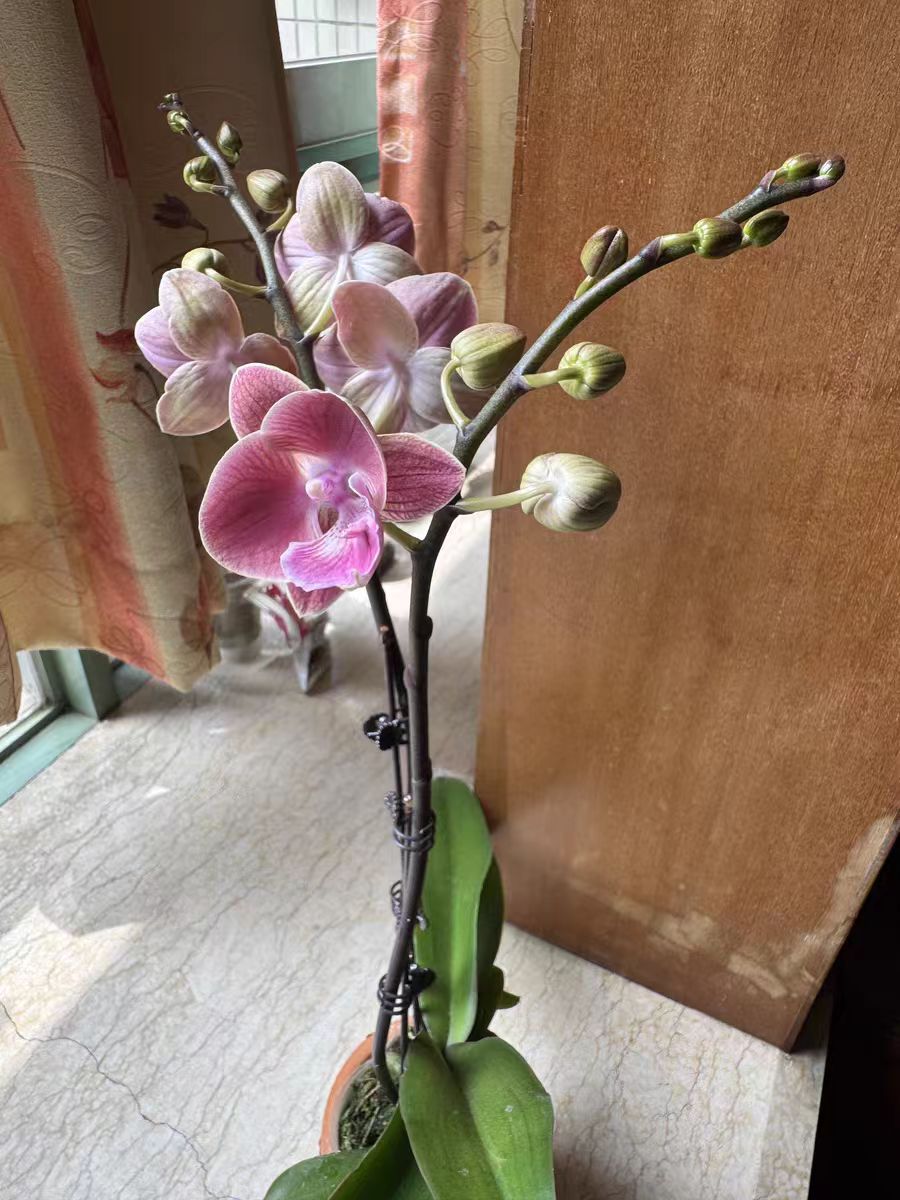In the process of caring for Phalaenopsis, the selection of planting media is of crucial importance as it directly affects the growth of the plant. To ensure the healthy growth of Phalaenopsis, apart from suitable light, temperature, and humidity conditions, high - quality planting media are also indispensable. So, how can we judge the quality of Phalaenopsis planting media? And what should we do if the planting media get moldy?
To judge the quality of Phalaenopsis planting media, we need to consider multiple factors. In terms of air permeability, good planting media should have excellent air - permeable properties, allowing the roots of Phalaenopsis to breathe freely. Granular planting media such as pine bark and Leca have large gaps between them, through which air can circulate freely, creating an excellent breathing environment for the roots. If the planting media have poor air permeability, such as ordinary garden soil which is compact in texture, the roots will grow poorly due to lack of oxygen and may even rot. Moisture - retention is also a key factor. Phalaenopsis prefers a humid environment but is afraid of waterlogging, so high - quality planting media should have moderate moisture - retention capacity. Sphagnum moss is a typical planting medium with strong moisture - retention ability, which can remain moist for a long time to meet the water demand of Phalaenopsis. However, if the water - retention capacity is too strong, it will easily lead to the roots being soaked in water for a long time, causing root rot.
Nutrient content should not be overlooked either. Nutrient - rich planting media can provide sufficient nutrients for the growth of Phalaenopsis and promote the healthy growth of the plant. For example, planting media with an appropriate amount of organic fertilizer can slowly release elements such as nitrogen, phosphorus, and potassium to meet the needs of Phalaenopsis at different growth stages. If the planting media are nutrient - deficient, frequent fertilization is required to supplement nutrients, which increases the difficulty and cost of maintenance. In addition, we should also pay attention to the pH value of the planting media. Phalaenopsis is suitable for growing in a slightly acidic environment, with a pH value generally between 5.5 and 6.5. Therefore, the pH value of good planting media should be within this range to create suitable growth conditions for Phalaenopsis.
When you find that the Phalaenopsis planting media are moldy, don't panic. You can take the following measures to deal with it. If it is slightly moldy, it may be caused by excessive watering and poor ventilation recently. At this time, stop watering immediately and move the Phalaenopsis to a place with good ventilation and bright light but no direct sunlight. Ventilation can accelerate air circulation, reduce the humidity of the planting media, and inhibit the growth of mold; suitable light can enhance the resistance of the plant. At the same time, use a small shovel or chopsticks to gently loosen the surface of the planting media to allow better air access and speed up water evaporation. If the mold situation is more serious, the Phalaenopsis needs to be removed from the pot. Carefully take the plant out of the flowerpot, trying to avoid damaging the roots. Slowly rinse the roots with clean water to wash away the moldy planting media and impurities. After rinsing, soak the roots in a diluted carbendazim solution for 15 - 20 minutes for sterilization. After soaking, place the Phalaenopsis in a cool and ventilated place to dry. After the water on the surface of the roots has completely evaporated, replant it in new, sterilized planting media.
For the prevention of mold in planting media, daily maintenance is also very important. When watering, follow the principle of "watering when the soil is dry and soaking it thoroughly when watering". Before each watering, observe the dry - wet condition of the planting media. Water it after the surface is dry, and make sure to water it thoroughly but avoid waterlogging. Also, ensure that the maintenance environment has good ventilation. Air circulation can effectively reduce humidity and reduce the chance of mold growth. In addition, regular replacement of planting media is also a good method. Generally, it is recommended to replace the planting media every 1 - 2 years to maintain the air permeability and fertility of the planting media and provide a good environment for the growth of Phalaenopsis.
In conclusion, by understanding the method of judging the quality of Phalaenopsis planting media, mastering the coping strategies for moldy planting media, and doing a good job in daily maintenance, we can enable Phalaenopsis to grow healthily in suitable planting media.
How to Judge the Quality of Phalaenopsis Planting Media?

Share with
Tagged in :




Leave a Reply